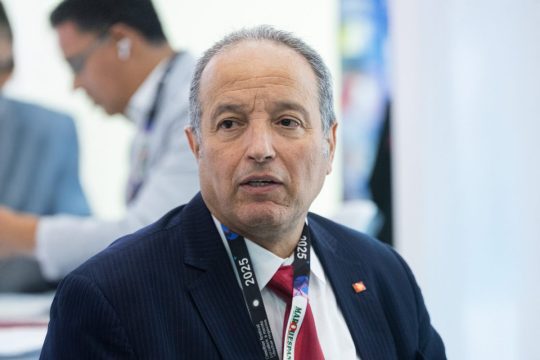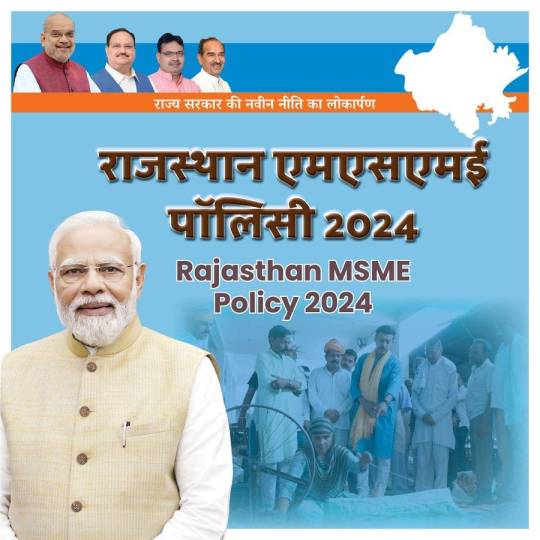#Trade and Export Promotion Center
Explore tagged Tumblr posts
Text
Nepal's Petroleum Imports Surge Past Rs 350 Billion in Just One Year
KATHMANDU, Aug 19: Petroleum products accounted for 18.87 percent of the country’s total import of Rs 1.592 trillion in the fiscal year 2023/24. According to the data of the Trade and Export Promotion Center (TEPC), petroleum products worth Rs 354 billion were imported in the last fiscal year. According to the TEPC, the import of petroleum products declined by 2.9 percent in the fiscal year…
0 notes
Text
Tom Schaller and Paul Waldman at Public Notice:
After our book, “White Rural Rage: The Threat to American Democracy,” hit shelves in February of last year, we made a wager: Tom bet that Donald Trump’s support among rural white voters had peaked in 2020, and Paul predicted Trump would further increase his white rural support in 2024. Alas, Paul looks to be the winner. While the final tallies are not yet in, the AP Votecast shows that Trump’s overall rural support increased by three points from 2020 to 2024, and about three-quarters of rural residents are white. Those numbers indicate he’s pushed up his ceiling among rural voters each of the three cycles he’s been on the ballot. More than 100 days into his second term, however, Trump’s policies are starting to wreak havoc on the very rural white citizens who have been his most loyal geo-demographic voting base. If they voted for Trump last year hoping he’d make their lives better, they’re quickly finding out they made a mistake.
Farm policy
Given the damage of Trump’s first-term agriculture tariffs, rural American farmers may have forfeited the right to express surprise or dismay about what’s happening to them — again. Despite Trump’s “trade wars are easy to win” bluster, farmers learned the hard way in 2018 and 2019 how easily those wars are lost, especially when the primary combatant is China. After Beijing reciprocated by retaliating against Trump’s tariffs with its own on US farm exports in Trump’s first term, American farming losses and bankruptcies quickly mounted. Trump had to authorize $28 billion in farm bailouts to make up for the damage farmers endured. This time around, the cost of Trump’s chaotic trade policy to farmers is magnified by three factors.
The first is Trump’s wildly chaotic imposition of tariffs, which complicate farmers’ crop decisions. Unpredictable tariff policies create uncertainties for any affected industry, of course. But unlike a car bumper or a computer chip, fruits and vegetables are perishable. [...] The second factor is shrinking demand caused by the administration’s reckless DOGE cuts. The dismantling of the US Agency for International Development (USAID) has been devastating for people around the world who relied on American aid, but has hurt American farmers, too. The shuttering of USAID programs threatens the roughly $2 billion in food that the USDA purchases annually from American farmers to supply USAID aid programs that feed starving people around the globe. Those purchases have stopped, leaving crops sitting in storage with no one to buy them. Large-scale farmers in Texas and Virginia are already taking a hit.
[...]
Coal and extractive industries
Few regions voted for Donald Trump with more enthusiasm than coal country, a land of broken Trump promises. Since 2016, Trump has repeatedly claimed he’d bring back all the coal jobs that have disappeared, but he has never delivered. He recently brought a group of coal miners to the White House for a photo op to announce a pair of executive orders meant to promote coal.
[...]
Schools and libraries
Because more than two-thirds of rural counties lost population between the 2010 and 2020 censuses, rural schools are shrinking if not closing. Many of the K-12 schools that have survived are severely under-resourced. Among its duties, the National Center for Education Statistics (NCES) tracks beleaguered schools and targets them for federal support. NCES helps determine which struggling, under-funded rural schools need federal subsidies through the Rural Education Achievement Program (REAP). These monies provide salary, supply, and technology support to rural schools so small they graduate as few as 10 seniors per year. [...]
The poor and minorities
Look at any program serving Americans with low or moderate incomes that Trump is trying to cut or eliminate, and you’ll likely find a particularly harsh impact on rural areas. For instance, the administration is seeking to end Head Start, which supports thousands of child care centers around the country. According to a recent report from the Center for American Progress, “Head Start programs represented 22 percent of the overall child care slots in rural communities, including available home-based care. Approximately 46 percent of all funded Head Start slots are in rural congressional districts, compared with 32 percent in suburban districts and 22 percent in urban districts; and 96 percent of rural congressional districts have at least one Head Start grantee, compared with 83 percent of suburban districts and 81 percent of urban districts. Without Head Start, many rural communities would have no licensed child care center.” [...]
Informational literacy and broadband access
Many rural areas are “news deserts,” where local papers have shut down and there are few options for local news — except for the nearest NPR station. As NOTUS explains, “Because rural stations have smaller audiences, they receive fewer donations and rely more on federal funds than stations based in major cities.” Trump signed an executive order targeting the Corporation for Public Broadcasting (CPB), which provides support to PBS and NPR, and is asking congressional Republicans to cut off funding completely. While CPB funds provide just a small portion of the budget for the national news organizations, those funds are critical to local stations.
[...]
Rural reawakening
Paul was correct in the short term about rural support for Donald Trump ticking up. But might Tom be proven right over time? A stunning PBS/NPR/Marist poll released earlier this month showed Trump’s support in rural America since taking office cratering. His February approval rating of 59 percent — a figure that includes both Trump-loving white rural citizens and far less supportive non-white rural citizens — fell 19 points to just 40 percent. Given the limited number of rural residents in all but the biggest national surveys, that poll could be an outlier. But it suggests doubts may be emerging in the places where Trump got his strongest support — and which are now being punished for believing that he actually cared about them.
A White rural reckoning could be happening, as Donald Trump’s strongest group of supporters (rivaled only by White Evangelicals) are beginning to face the music about Trump policies harming rural Americans.
#Rural#Donald Trump#2024 Elections#2024 Presidential Election#AP Votecast#White Rural Rage: The Threat to American Democracy#Agriculture#Tariffs#Trump Tariffs#DOGE#USAID#Rural Education Achievement Program#Education#Coal
26 notes
·
View notes
Text
In late February, the Office of Management and Budget instructed all federal entities to align themselves with “the President’s America First foreign policy.” It required agencies and private institutions that receive government grants to conduct a kind of self-audit, to weed out foreign programs that do not promote “American prosperity by advancing capitalism, markets that favor Americans, competition for American partnership, and economic self-reliance.” There would be no more “global welfare mentality.” As part of the audit, any grantee receiving money for “foreign assistance” would have to answer the question “Does this project create measurable benefits for U.S. domestic industries, workforce, or economic sectors?”
U.S.A.I.D., the government’s primary conduit of development and disaster assistance abroad, was already being liquidated. The United States had withdrawn from the World Health Organization and the U.N. Human Rights Council; the State Department seemed more preoccupied with deportations than with diplomacy. Yet some international work remained possible inside agencies with a primarily domestic agenda. At the Department of Labor, for instance, grants were still funding nonprofits that educated migrant farmworkers about their rights to fair recruitment, and groups that tackled human trafficking in countries that export products to the United States, from Congolese cobalt to Colombian flowers. (The Tariff Act of 1930 bans imports of goods made by forced labor, and campaigns against such exploitation have been historically bipartisan.) The Labor Department’s Bureau of International Labor Affairs, or ILAB—which was created just after the Second World War—was still sending investigators to factories and training judges abroad to enforce labor provisions in various trade accords, including the United States-Mexico-Canada Agreement (U.S.M.C.A.), the update to the North American Free Trade Agreement (NAFTA) that Donald Trump negotiated in his first term. “This work is of interest to the Administration,” one ILAB employee told me. “That’s the thing I thought would save us.”
Lori Chavez-DeRemer, Trump’s new Labor Secretary, was sworn in on March 11th. She moved quickly to comply with the O.M.B. request—and with the Administration’s overarching objective of shrinking the federal government. Large posters of her, captioned “LET’S GET TO WORK,” went up in the elevators at D.O.L. headquarters, in Washington. Within days, she had cancelled a number of ILAB grants. She posted the news to X, boasting of having saved thirty million dollars “by eliminating ‘America Last’ programs in foreign countries like Indonesia, Colombia, Guatemala, Chile, & Brazil.” Elon Musk’s Department of Government Efficiency (DOGE) account reposted it, writing, “Great job.” According to Business Insider, three DOGE employees were stationed at the D.O.L., including Miles Collins, who reportedly co-owns Pacific Fertility Center, a Los Angeles clinic that is being sued for employment discrimination for, among other things, denying a pregnancy-related medical leave. (Pacific Fertility Center did not respond to a request for comment.)
In late March, DOGE praised Chavez-DeRemer and the Labor Department for cancelling all remaining “ ‘America Last’ grants for $237M in savings.” These funds would instead go to the “AMERICAN Workforce,” the D.O.L. wrote on X, though Congress had specifically earmarked them for “programs to combat exploitative child labor internationally” and “programs that address worker rights” in countries with which the U.S. trades. “We learned this morning that the Department has taken a decision to immediately terminate all of ILAB’s existing grants,” Mark Mittelhauser, the associate deputy under-secretary who ran ILAB, wrote to some hundred and fifty employees of the bureau. Those in charge of administering and evaluating programs in dozens of countries were dumbfounded. There was an immediate stop to projects supporting collective bargaining in Mexico, addressing worker abuses in Southeast Asian fisheries, and reducing child labor and sexual exploitation in Madagascar’s mica mines. On X, the D.O.L. posted a cartoon meme deriding ILAB for “FUNDING UZBEKISTAN’S COTTON INDUSTRY.” In fact, ILAB and its grantees had advocated for years to target child and forced labor in that country, one of the world’s top cotton producers, so that American businesses weren’t undermined by an artificially cheap supply. The United States Fashion Industry Association and the American Apparel & Footwear Association wrote to Chavez-DeRemer, pleading for her not to end the program. Grantees such as the International Labour Organization, the Solidarity Center, and the American Institutes for Research made plans to lay off staff all over the world. A second ILAB employee told me, “We’re basically saying to the rest of the world, ‘Go ahead.’ It’s profitable for businesses to have supply chains that aren’t ethical, employing children, forcing people to work.”
Mittelhauser was abruptly placed on administrative leave in early April and marched out of D.O.L. headquarters. Chavez-DeRemer temporarily replaced him with her chief of staff, Jihun Han, who worked for Chavez-DeRemer when she was a member of Congress. (She was elected in 2022 and served one term.) Chavez-DeRemer sent an e-mail to employees at ILAB and three other sub-agencies—the Women’s Bureau, the Office of Public Affairs, and the Office of Federal Contract Compliance Programs—urging them to consider early retirement or “deferred resignation,” in which employees are placed on leave for a period of months before their official separation. Mass layoffs would be coming soon. She later extended this offer to all of the D.O.L.
On the fifth floor of headquarters, ILAB staff cried in the halls. “Everyone was constantly fearing for their job,” a third, longtime ILAB employee told me. “They’ll show up one day, and their cards to get in will just be shut off—the mental fuck of the whole thing.” Meanwhile, the D.O.L. posted a gauzy head shot of Chavez-DeRemer, captioned “HAPPY BIRTHDAY, MADAM SECRETARY,” on X, and threw a party. Wine and flowers were set atop dark-blue tablecloths; Chavez-DeRemer’s photograph was projected on large monitors. The “Alt U.S. Department of Labor” account on Bluesky posted, “Does it get any more ‘let them eat cake’ than golf tournaments and birthday soirees?” (Trump had just returned from a golfing weekend in Palm Beach.) Employees scribbled “Resist” in the elevators and taped over the Chavez-DeRemer posters with a two-part meme of the singer Drake: in one image, he frowns and turns away from the phrase “Using taxpayer dollars to end unsafe working conditions”; in the other, he smiles and points approvingly at “Using taxpayer dollars to throw yourself a birthday party.” (Courtney Parella, a D.O.L. spokesperson, denied that it was a birthday party and said that whatever cake was there had been purchased by Chavez-DeRemer’s family.)
Yesterday, an hour and a half after The New Yorker e-mailed a list of fact-checking queries and requests for comment to the D.O.L., Han, the chief of staff, sent a memo to all department employees, warning them not to speak with the media. Doing so, he said, could lead to serious legal consequences, including “potential criminal penalties.” At least one employee has filed a complaint with the Office of Special Counsel, an agency that protects federal whistle-blowers, alleging an improper “gag order.”
Last week, the vast majority of staff in the D.O.L.’s contract-oversight division, the Office of Federal Contract Compliance Programs (O.F.C.C.P.), either resigned or were put on indefinite leave. “We were given one hour of notice before being told we had to leave the office, and locked out of all D.O.L. systems,” an O.F.C.C.P. employee in California told me. In the past fiscal year, the division recovered $22.5 million for more than twelve thousand workers who had been discriminated against by contractors. “Some of those recoveries were for white males,” the employee added. The employee believed that the Administration and DOGE had targeted O.F.C.C.P. because of a pending “compliance review” of fair-employment practices at Musk’s Tesla plant in Fremont, California. That review was largely abandoned in early February. (Tesla recently settled a suit by a Black worker at the plant who said that racial slurs had been written all over the walls and that a manager repeatedly greeted employees by saying, “Welcome to the slave house.” Other suits are pending.) There is now almost no one left to make sure that private companies receiving billions of dollars from the government comply with civil-rights laws. Parella, the D.O.L. spokesperson, said that the changes at O.F.C.C.P. have “nothing to do with Elon Musk and everything to do with restoring merit-based opportunity.”
ILAB staff took an informal census of who would be leaving through deferred resignation and early retirement, and counted forty per cent of the bureau. Several employees told me that they had felt pushed out; they had no real choice. Teams within ILAB hosted get-togethers in person and online, to wish their colleagues goodbye. It wasn’t clear who would perform tasks that are required by statute: investigating and publishing annual reports on child labor and forced labor; coördinating with Customs and Border Protection to exclude imports produced by those means; enforcing labor provisions in the U.S.M.C.A. in collaboration with the U.S. Trade Representative. A fourth ILAB employee told me that she worried about her projects in Africa, where the bureau had funded trainings for workplace inspectors. “We think about the lives of people in other places in the world,” she said. “But the goal is also to benefit the U.S. in terms of both soft power and trade agreements.”
Trump’s erratic tariff policies were undermining trade pacts such as the U.S.M.C.A. The same day DOGE and Chavez-DeRemer cancelled all of ILAB’s grants, Trump had announced levies of twenty-five per cent on auto imports. His decision was praised by the United Auto Workers but criticized by trade economists for likely slowing down production and increasing prices. When Trump signed the U.S.M.C.A. into law, in 2020, he called it “the largest, fairest, most balanced, and modern trade agreement ever achieved,” and declared an end to “the NAFTA nightmare.” Many unions and labor experts agreed. Unlike NAFTA, the U.S.M.C.A. required forty to forty-five per cent of the contents of every imported vehicle to be made by workers who are paid sixteen or more dollars per hour. It was also the first trade agreement to include a “Rapid Response Mechanism” (very fast compared with the complaint process at the World Trade Organization) through which workers, unions, or businesses could complain of unfair labor practices in Mexico. “It’s a way to penalize or respond to companies who aren’t following Mexican labor law, when their goods are coming into the U.S.,” a fifth ILAB employee told me. The results have benefitted mining and manufacturing workers in more than thirty cases so far. In 2022, the Teksid Hierro auto-parts plant, in the state of Coahuila, a few hours’ drive from the Texas border, was required to rehire and compensate three dozen employees who had been fired for organizing; the workers went on to negotiate a nine-per-cent wage increase and safety improvements. In 2023, the Goodyear rubber factory in the central Mexican state of San Luis Potosí was mandated to hold an independent union election and pay workers $4.2 million in back wages and benefits.
Higher standards in Mexico make it harder for U.S. companies to reduce wages or outsource their work. Vice-President J. D. Vance recently condemned “offshoring factories to cheap-labor economies,” yet the DOGE cuts could make the problem worse. “For nearly a century, the U.S. government has recognized the importance of international labor rights to American interests,” a group of ILAB grantees wrote in a lawsuit filed last week. “Advocating for fair pay, safe working conditions, and organizing and bargaining rights for workers abroad helps ensure that American companies can compete on a fair playing field.” The lawsuit seeks a court order mandating that Chavez-DeRemer and the D.O.L. “spend money that Congress appropriated” on international programs. “It seems silly to think that the U.S. is our own completely separate entity,” the fifth ILAB employee said.
Since Trump took office, I’ve spoken to more than two dozen employees at ILAB and the rest of D.O.L. I’ve also spoken to workers with regional and global expertise at U.S.A.I.D., the Department of the Interior, and the Department of Health and Human Services. As the Trump Administration moves to cancel international programs across the federal government, an idea seems to be taking shape: that it’s possible to return America to a less interconnected era. Civil servants who have spent their careers managing viral pandemics or fighting enslavement in factories and mines understand that this is unrealistic. Sick people travel, as do goods tainted by forced labor. Manufacturers rely on intricate, transnational webs of production. “This idea of isolating ourselves and closing off from the world is not going to be good for our country,” the fourth ILAB employee told me. “It’s not good economic policy, either.” Then again, certain positions that were once universal, or at least bipartisan, appear to be breaking down: the opposition to child labor, for one. The Florida legislature is currently considering a bill that would allow fourteen-year-olds to work long hours, including on overnight shifts. Governor Ron DeSantis recently endorsed child labor as a fix for worker shortages caused by mass deportations and by a new state law criminalizing undocumented immigrants. “Why do we say we need to import foreigners, even import them illegally, when, you know, teen-agers used to work at these resorts?” DeSantis said on a panel with Trump’s border czar, Tom Homan. “What’s wrong with expecting our young people to be working part time?”
15 notes
·
View notes
Text
𝐀𝐍𝐓𝐈𝐕𝐀 & 𝐀𝐍𝐓𝐈𝐕𝐀 𝐂𝐈𝐓𝐘
just to give you a general idea on it's location; antiva is bordered by the rialto bay, with rivain to the East, the tevinter Imperium to the west and the free marches to the south. it's climates vary, but mostly remain a very north eastern climate. during winter, frequent storms bring bitter cold and frozen precipitation, especially to the northern parts around the bay. while summers are warm and humid, with plenty of rain through most of the country. the majority of settlements are along the coast, including it's 5 major cities. which promotes a vast seafaring culture.
𝐜𝐮𝐥𝐭𝐮𝐫𝐞 & 𝐢𝐧𝐬𝐩𝐢𝐫𝐚𝐭𝐢𝐨𝐧
the symbol of antiva is a golden drake.
antiva takes a great of inspiration from spain and italy. the language and mannerisms of the locals a curious mixture of both. the origins of modern antiva lie in the alliance of pirates and dubiously aligned peoples who favored a safer and more lucrative life on land, as opposed to a life at sea. antiva was already ruled by a king at the time- but they did manage to compromise, and form the culturally rich, and prosperous nation that is antiva at current day.
satinalia is a theodosian holiday. it is accompanied by grand celebration, the wearing of masks, and naming the town fool as ruler for a day. particularly in antiva, satinalia lasts for a week or more, while a week of fasting follows. this holiday is celebrated at the beginning of umbralis ( the beginning of november ).
antiva has a rich history of puppetry. and while the primary purpose of these puppet shows is for entertainment, many street shows comment on and joke about political issues. as well as those in power, and events among the noble and rich. the antivan crows are known to use these shows as a way to send public messages.
𝐭𝐫𝐚𝐝𝐞 & 𝐞𝐱𝐩𝐨𝐫𝐭𝐬
as a coastal country with bustling ports, it facilitates a great deal of trade, both through piracy and legitimate business. the exports of antiva are numerous and varied, but it is most renowned for its unparalleled wines, as well as its coffee.
other trades antiva is known for:
rubies, diamonds, and pearls.
detailed, and exquisite leatherworking & weaving.
porcelain, and woodworking.
olives, brandy, spices & orange extract.
other foods made and grown locally.
𝐩𝐨𝐥𝐢𝐭𝐢𝐜𝐬
so, politically speaking, antiva feels like a fictionalized version of a medieval city-state like venice. as a whole it is a plutocratic nation; which means it is governed almost entirely by wealth. though it does have political leaders; most notably a line of kings that has remained unchanged for a very very long time. the real power within the country rests with about a dozen merchant princes. things are run quite strictly within this network, and has worked well this way since antiva was born.
naturally i cannot mention antivan politics without bringing up the antivan crows; who i made a rather large post on here. antiva actually doesn't have much in the way of a military. rather, the reputation of the crows is more than enough to deter any nation who ever considered invading. as the house of crows is the most efficient, most feared, and most expensive guild of assassins in all of thedas. and their home resides at the very heart of antiva.
in addition to the crows however, they do have a maritime presence. a fleet of antivan pirates called the felicisima armada. their presence the leading force in the entire region at current. it gained even more influence when the pirates aided the allied forces in the exalted marches against the qunari, and now poses a serious threat on the waking sea. wealthy merchants often prefer to pay the leaders of the Armada rather than to risk their cargo.
𝐀𝐍𝐓𝐈𝐕𝐀 𝐂𝐈𝐓𝐘
so my post doesn't get too long, i'll try to summarize a bit...
this is the capital of antiva, and is a major port-city and center of trade. the city is both beautiful and deadly, much like many of the people there. it's a romantic location known for its wealthy port and robust trade, as well as the wine that is the country's main export. it also houses danger and intrigue as it is the base of operations for the infamous antivan crows. due to its connection to the crows the city also houses the crows' archive and its secret prison, velabanchel.
due to its permissive culture, cntiva city is home to several brothels. which may foster orphaned and bastard children, and these children may then be purchased at auction by the likes of the antivan crows.
it is noted by zev/ran in game that it rains all the time in antiva city, and the flowers there are always in bloom.
alistar mentions at one point that the smell of the city varies. sometimes it smells like a mix of seawater, spices, and wine. other times it smells like rotten fish, and mildew. depends on the day, and where you are.
the city had actually fallen at one point during a previous blight. but was rebuilt rather quickly once it was safe to return to it.
despite having royalty, and a ruling family. antiva city, and much of antiva itself is actually ruled by the merchant princes.
#𝐀𝐁𝐎𝐔𝐓. / zevran#repost.#/ long post#I WAS SO NORMAL ABOUT THIS!#and i love that all this is p much ??? true to canon.#like the continuity in veilguard is amazing.#ask to tag.
7 notes
·
View notes
Text
Thailand Board of Investment
The Thailand Board of Investment (BOI) is a pivotal government agency tasked with promoting investment in Thailand, both from domestic and foreign sources. Established in 1966, the BOI plays a crucial role in driving economic growth, fostering innovation, and enhancing Thailand's competitiveness in the global market. By offering a range of incentives, streamlined services, and strategic support, the BOI attracts high-value investments across various sectors. This article provides an in-depth exploration of the BOI, covering its legal framework, incentive schemes, application process, and strategic considerations for investors.
Legal Framework and Mission of the BOI
The BOI operates under the Investment Promotion Act B.E. 2520 (1977), which grants it the authority to provide incentives and support to qualified investments. The BOI's mission is to:
Promote Investment: Attract domestic and foreign investment in targeted industries and regions.
Enhance Competitiveness: Strengthen Thailand's position as a regional hub for trade and investment.
Foster Innovation: Support research and development (R&D), technology transfer, and sustainable practices.
Facilitate Business: Streamline regulatory processes and provide comprehensive support services to investors.
The BOI is governed by a board chaired by the Prime Minister, with members from key ministries and private sector representatives, ensuring a balanced approach to investment promotion.
Key Incentives Offered by the BOI
The BOI offers a range of incentives to attract and support investments in targeted industries. These incentives are designed to reduce costs, enhance competitiveness, and facilitate business operations. Key incentives include:
1. Tax Incentives
Corporate Income Tax (CIT) Exemptions: Projects may receive CIT exemptions for up to 8 years, with possible extensions for projects in advanced technology or R&D.
Import Duty Exemptions: Exemptions on import duties for machinery, raw materials, and components used in production.
Dividend Tax Exemptions: Dividends paid from exempted profits are also exempt from taxation.
2. Non-Tax Incentives
Land Ownership: Foreign investors may own land for promoted projects, subject to BOI approval.
Work Permits and Visas: Simplified procedures for obtaining work permits and visas for foreign executives, experts, and technicians.
Repatriation of Funds: Permission to repatriate investment capital, profits, and dividends.
3. Sector-Specific Incentives
Targeted Industries: Enhanced incentives for industries such as biotechnology, digital technology, renewable energy, and advanced manufacturing.
Special Economic Zones (SEZs): Additional incentives for investments in SEZs, including infrastructure support and reduced regulatory requirements.
4. Additional Benefits
Investment Promotion Zones: Incentives for investments in designated zones, such as the Eastern Economic Corridor (EEC).
Green Initiatives: Additional benefits for projects that promote environmental sustainability and energy efficiency.
Targeted Industries and Strategic Sectors
The BOI focuses on promoting investments in industries that align with Thailand's economic development goals. Key targeted industries include:
Advanced Technology and Innovation:
Biotechnology, nanotechnology, and advanced materials.
Digital technology, including software development, data centers, and cybersecurity.
Sustainable Industries:
Renewable energy, such as solar, wind, and biomass.
Environmental management and waste-to-energy projects.
High-Value Manufacturing:
Automotive and aerospace industries.
Electronics and electrical appliances.
Services and Infrastructure:
Tourism and hospitality, including medical tourism.
Logistics and transportation, particularly in the EEC.
Agriculture and Food Processing:
High-tech agriculture and food innovation.
Halal food production and export.
Application Process for BOI Promotion
The process of applying for BOI promotion involves several steps, each requiring careful preparation and adherence to regulatory requirements. Below is a detailed breakdown:
1. Determine Eligibility
Identify the appropriate BOI category and incentives based on your business activities and investment plans.
Ensure that your project aligns with the BOI's targeted industries and strategic goals.
2. Prepare Required Documents
Business Plan: Detailed plan outlining the project's objectives, scope, and financial projections.
Financial Statements: Audited financial statements for existing companies or pro forma financials for new ventures.
Technical Specifications: Details of machinery, technology, and production processes.
Environmental Impact Assessment (EIA): For projects with potential environmental impacts.
3. Submit the Application
Submit the application through the BOI's online portal or at a BOI office.
Pay the application fee, which varies depending on the project size and complexity.
4. Review and Approval
The BOI reviews the application, including the project's feasibility, economic impact, and compliance with regulations.
Additional information or clarifications may be requested during the review process.
5. Receive BOI Promotion Certificate
If approved, the BOI issues a Promotion Certificate, detailing the incentives and conditions.
The certificate must be registered with the relevant government agencies to activate the incentives.
6. Compliance and Reporting
BOI-promoted projects are subject to periodic reporting and compliance checks.
Ensure that all conditions and requirements are met to maintain the incentives.
Strategic Considerations for Investors
To maximize the benefits of BOI promotion, investors should consider the following strategies:
Sector Alignment:
Align your investment with the BOI's targeted industries and strategic goals.
Research the specific incentives and requirements for your sector.
Comprehensive Planning:
Develop a detailed business plan that outlines the project's objectives, scope, and financial projections.
Consider the long-term impact of the investment and potential for expansion.
Legal and Regulatory Compliance:
Ensure compliance with Thai laws and regulations, including environmental and labor standards.
Seek legal advice to navigate the complexities of BOI promotion and regulatory requirements.
Partnerships and Collaboration:
Form strategic partnerships with local businesses, research institutions, and government agencies.
Leverage local expertise and networks to enhance the project's success.
Sustainability and Innovation:
Incorporate sustainable practices and innovative technologies into the project.
Explore opportunities for R&D and technology transfer to enhance competitiveness.
Recent Developments and Trends
Thailand's investment landscape is evolving, with several trends and developments shaping the BOI's strategies:
Eastern Economic Corridor (EEC):
The EEC is a flagship initiative to develop the eastern region into a hub for advanced industries and innovation.
The BOI offers enhanced incentives for investments in the EEC, including infrastructure support and streamlined regulations.
Digital Transformation:
The BOI is promoting investments in digital technology, including artificial intelligence, blockchain, and fintech.
Digital infrastructure projects, such as data centers and smart cities, are prioritized.
Sustainability and Green Initiatives:
There is growing emphasis on sustainable investments, including renewable energy, waste management, and green manufacturing.
The BOI offers additional incentives for projects that promote environmental sustainability.
Post-Pandemic Recovery:
The BOI is implementing measures to support economic recovery, including incentives for healthcare, biotechnology, and supply chain resilience.
Efforts to attract foreign investment and boost domestic industries are intensified.
Conclusion
The Thailand Board of Investment (BOI) is a vital institution for promoting investment and driving economic growth in Thailand. By offering a range of incentives, streamlined services, and strategic support, the BOI attracts high-value investments across various sectors. Understanding the BOI's legal framework, incentive schemes, and application process is essential for investors seeking to capitalize on the opportunities in Thailand. As the country continues to evolve its investment landscape, staying informed and proactive will remain key to achieving long-term success. Whether you are a domestic entrepreneur or a foreign investor, the BOI provides a robust platform for realizing your investment goals and contributing to Thailand's economic development.
#thailand#thai#corporate#thailandboardofinvestment#thailandboi#thaiboi#boi#boardofinvestment#corporateinthailand#businessinthailand#business
4 notes
·
View notes
Text
Tunisia investing in business with Brazil

The Ambassador of Tunisia to Brasília, Nabil Lakhal, said on Monday (12) in São Paulo that his country is betting on increasing business with Brazil in the medium and long term. He plans to strengthen the diplomatic mission in Brazil to establish more relations with the country, in addition to investing in trade shows in Brazil, such as retail sector fair APAS Show, which started on Monday (12) at the Expo Center Norte in São Paulo.
Eight Tunisian companies are participating in APAS Show at one of the two stands organized by the Arab-Brazilian Chamber of Commerce (ABCC) at the exhibition, which also features companies from Egypt and the United Arab Emirates. Last year, Lakhal noted, six Tunisian companies attended the event. “Our goal is for Brazilians to invest in Tunisian olive oil. To achieve this, we’re organizing a tasting session at the ABCC, which will be an opportunity to learn more about Tunisian olive oil and dates, too,” he said, regarding a joint initiative with APAS Show to promote Tunisian products for invited guests in São Paulo.
“For Tunisia, Brazil is a very important country because Tunisia’s policy is to seek partners. We have a strong relationship with the European Union, but we want to diversify our partners, and Brazil is one of the most important,” the diplomat told ANBA. “Tunisian olive oil is already sold in many commercial establishments, and we are now the top exporter of dates to Brazil,” he added. He mentioned that from 2023 to 2024, Tunisia’s olive oil sales to Brazil doubled and there is an increasing demand for Tunisian products in the country.
Continue reading.
#brazil#politics#brazilian politics#economy#tunisia#geopolitics#tunisian politics#image description in alt#mod nise da silveira
2 notes
·
View notes
Text
economy of HAIQIN
------------------------------------------------------------------------------
date: november 24, 2024
------------------------------------------------------------------------------
The Economy of Haiqin
Currency
Haiqian (HQN):
The currency symbol, HQN, is recognized regionally for stability and is commonly pegged against the USD. With a favorable exchange rate of 1 HQN to 0.75 USD, the Haiqian serves as a benchmark for economic health in neighboring countries.
Digital Currency:
As a forward-thinking nation, Haiqin has integrated digital currency into daily life. Roughly 80% of transactions are conducted digitally, promoting a cashless economy and streamlining payment methods for both domestic and international trade.
Banking & Financial Inclusion:
A highly developed banking sector offers easy access to financial services through mobile banking, particularly aiding small businesses. Public investment in financial education is substantial, aimed at improving fiscal literacy among citizens.
Trade Relations
Exports
Agricultural Products:
Due to fertile land and a favorable climate, Haiqin exports high-quality agricultural products, particularly fruits, vegetables, and grains during Iktoia. Specialty items, such as exotic herbs and teas unique to Haiqin, have a growing global market. These products are particularly sought after during harvest seasons, aligning with major festivals like Iktoia.
Artisanal Crafts:
Renowned for handmade textiles, clothes, pottery, and jewelry, the craftsmanship of Haiqin is a cornerstone of cultural exports, with a significant sales boost during the Festival of Arts.
Technology:
Leading the way in green energy, Haiqin exports solar panels, software, and sustainable tech solutions to several nations.
Imports
Raw Materials:
Haiqin imports metals, oil, and minerals essential to its manufacturing sectors.
Luxury Goods:
High-end fashion, imported automobiles, and gourmet foods are popular among the elite, highlighting Haiqin’s demand for imported luxury.
Wealth Distribution
Income Disparities:
While Haiqin as a whole is wealthy, income inequality is evident, with urban centers like Stellis holding the majority of economic wealth, while more rural areas face economic challenges. The wealthy class largely consists of business magnates, tech industry leaders, and high-ranking government officials.
Middle-Class Growth:
Urban centers, particularly Stellis, have seen a rise in middle-class citizens, contributing to consumer spending and economic diversification.
Regional Disparities:
While urban areas enjoy greater access to services and infrastructure, rural areas have fewer economic opportunities, relying heavily on agriculture and artisanal crafts.
--scripted out poverty <333
Taxes & Tithes
Income Tax:
A progressive income tax scales from 10% to 35%, ensuring that higher earners contribute more significantly. Revenues from taxes fund public services, healthcare, and social programs.
Property Tax:
Property taxes are assessed based on land value and are used to fund local infrastructure projects.
Trade Taxes & Tariffs:
Sales taxes on goods and services, coupled with protective tariffs, help sustain local industries, particularly in agriculture and manufacturing. A national sales tax applies to consumer goods and services, with specific tariffs on imports to protect Haiqin’s domestic industries.
Corporate Tax Incentives:
To encourage growth in key sectors, the government offers tax breaks and incentives to companies in tech and renewable energy fields, helping drive innovation and economic diversification.
Major Industries
Technology:
The tech sector is a powerhouse, with a focus on sustainable solutions, AI, and renewable energy technology. Haiqin has invested heavily in research and development, becoming known for cutting-edge advancements that are exported worldwide.
Agriculture:
Haiqin’s agriculture not only supplies its people with fresh produce but also generates export income. Farming is closely tied to cultural festivals like Iktoia, with agriculture supported by governmental subsidies and modernized techniques.
Tourism:
Festivals and natural beauty attract a steady influx of tourists, making tourism a primary economic driver. Events such as the Iktoia harvest festival, Nera Day, and Lunar Fest draw visitors year-round. The government promotes eco-tourism, highlighting Haiqin’s forests, mountains, and coastal regions.
Employment & Labor
Diverse Job Market:
The Haiqin labor market is diverse, with jobs spanning agriculture, technology, tourism, and manufacturing. The tech sector alone has led to a surge in jobs, while seasonal agricultural work remains important for rural populations.
Labor Laws & Unions:
Labor unions are active and influential, protecting fair wages and working conditions. Seasonal labor opportunities peak during harvest and festival seasons, with temporary roles often filled by students and short-term workers.
Social Safety Nets:
Haiqin’s social safety nets include universal healthcare, unemployment benefits, and retirement funds. The government aims to prevent poverty, supporting citizens in need with housing assistance, job retraining, and social programs for the elderly and disabled.
Sustainability Initiatives
Green Policies:
With eco-friendly initiatives spanning multiple sectors, Haiqin leads in sustainable agriculture, renewable energy, and waste reduction programs.
Circular Economy:
Recycling and resource-efficient production are emphasized. Industries are incentivized to minimize waste, with taxes on high-pollution businesses encouraging green alternatives.
Environmental Partnerships:
Collaboration with environmental organizations has facilitated eco-tourism and green business practices, creating jobs focused on conservation and sustainable development.
Infrastructure and Transportation
Transportation Networks: Haiqin boasts a modernized transportation system, with high-speed railways connecting major cities, public electric buses, and bike-sharing programs in urban areas. The government has invested heavily in infrastructure to reduce congestion and support eco-friendly transport.
Energy Sector: Haiqin generates most of its energy from renewable sources, including solar, wind, and hydroelectric power. Its commitment to reducing carbon emissions has led to advanced green energy technologies, some of which are exported.
#reality shifter#reality shifting#shiftblr#shifting community#shifting#shifting motivation#shifting reality#dr scrapbook#dr world#reyaint#anti shifters dni
4 notes
·
View notes
Text
Minrathous: Middle Level - High District

Residences
Plaza Dumat
High Docks
City Guard Barracks
Archive Palace [Locus Cognitionis]
Public Library of Mirnathous
Temples and Shrines
Draconis Aurei [Golden Dragon]
Luxurious Brothels
Luxurious Inn: The Silver Serpent [Serpens Argenteus]
Bathhouse: Fons Splendoris [Fountain of Splendor]
Lore Warning: A good amount of information presented here is canon, linking their sources when it correspond. The rest is crafted-lore for personal fictional reasons.
Minrathous || High Level || Middle Level || Low Level
For more world-building and crafted-lore: Dragon Age Dreadwolf Tag of DA Crafted Lor
Middle Level: Upper Class Areas

Residences: It’s mostly filled with Manors and Villas of magisters, palaces of Altus, and mansions of merchants and military members.
Plaza Dumat: In the center of the middle level lies a green area adorned with trees and vibrant flowers, sustained by magic. The entire area is embellished with impressive statues of dragons and metallic Tevinter golems. It displays in the center a gigantic statue of Andraste, The Lady of Victoty, with a hand casting blue fire, as an eternal representation of her as a mage.
High Docks: highly controlled docks where exclusive legal cargo is managed, with a particular focus on the importation of fine products from Antiva and Rivain, such as clothing, gems, legal magical components, herbs, fruits, and food.
City Guard HQ and Barracks: This building serves as the headquarters for the City Guards, where they convene to discuss security matters, impart training, and handle recruitment. It maintains a close relationship with the Argent Spire, since the most questionable Templars are often demoted to city guards, while well-behaved city guards can be promoted to Templars. The City Guards are equipped with low-quality enchanted weapons and armor.
They permit human mages, particularly those who are poor Laetans and Liberati mages, to be part of the City Guards. However, these guards are not eligible for promotion to Templars in order to avoid “compromising” the Templar institution [ha!]. Elves are rarely seen serving as City Guards.

Archive Palace [Locus Cognitionis - Palace of Knowledge]: is a large building with multiple chambers that display flying libraries. These shelves are enchanted to prevent the accumulation of dust and humidity. The archive includes a chamber with ancient artifacts that resemble Elvhenan designs. It also preserves ancient lineage documents that confirm the Dreamer ancestry of families recognized by Tevinter. Additionally, it holds migratory records and moderately significant magical artifacts. The archive also stores import and export records, particularly those from the High Docks. It participates in the exchange of books, paperwork, and personnel with other archives throughout the Imperium.

Public Library of Minrathous : Public library which, ironically, can only be accessed by Altus. If Soporati and Laetans wish to gain access, they must initiate bureaucratic procedures to obtain a temporary usage permit. Part of this approval process needs to be completed at the Archive Palace.
Temples and Shrines: Temples originally dedicated to the Old Gods have been repurposed as shrines to the Maker or Hessarian, with minimal Andraste iconography present.

Golden Dragon [Draconis Aurei]: Upscale tavern/nightclub that offers a wide variety of drinks and drugs, both legal and illegal. It features discreet corners for romantic encounters, casual relationships, gambling games, and solitary entertainment of any kind.

Luxurious Brothels: There are several upscale brothels exuding an air of exclusivity and sophistication. Arcanae Voluptatis [Secrets of Pleasure]. There is also An Aqua Brothel: Aquae Amoris [Waters of Love].

Fons Splendoris [Fountain of Splendor] : Public bathhouse, secretly owned by the Lucerni. It is frequented by Altus, Laetans, and affluent, influential Soporati involved in trade and the military. Much like in ancient Rome, it serves as a venue for gatherings and meetings. The bathhouse also offers massages and basic forms of physiotherapy using herbs and water-based treatments. It is an ideal location for both listening to and spreading rumors.
The Silver Serpent [Serpens Argenteus]: One of the most exclusive and sophisticated palace inns in Minrathous, it is the preferred choice for emissaries, ambassadors, and wealthy merchants visiting the city.
3 notes
·
View notes
Text
Gems and Jewellery: A 17% Contribution to Rajasthan’s GDP — Col Rajyavardhan Rathore

Rajasthan, the land of royal heritage and exquisite craftsmanship, stands as a global hub for the gems and jewellery industry. This sector is not just an emblem of tradition but a vital contributor to the state’s economic strength, accounting for a remarkable 17% of Rajasthan’s GDP, as highlighted by Col Rajyavardhan Rathore.
The Backbone of Rajasthan’s Economy
The gems and jewellery sector in Rajasthan is more than just an industry — it is a cultural legacy that blends artistry with economic impact. From world-renowned gemstones like emeralds and rubies to intricate jewellery designs, this industry has placed Rajasthan prominently on the global map.
Key Highlights of the Industry
1. A Global Reputation
Rajasthan is home to:
Jaipur’s Gem Hub: Known as the ‘Pink City,’ Jaipur is a leading center for gemstone cutting, polishing, and jewellery manufacturing.
World-Class Exports: Gems and jewellery from Rajasthan are exported to the USA, Europe, and the Middle East.
2. Employment Generation
The industry provides livelihoods to thousands of artisans and workers, especially in Jaipur, Udaipur, and Jodhpur.
3. Contribution to Tourism
Rajasthan’s reputation as a jewellery hub attracts tourists who come to experience and purchase handcrafted ornaments, boosting local economies.
Economic Impact of the Gems and Jewellery Sector
1. Significant GDP Contribution
The 17% share in Rajasthan’s GDP underscores the sector’s pivotal role in driving economic growth.
2. Export Revenue
High-quality gemstones and unique jewellery designs ensure consistent export demand.
The state contributes significantly to India’s position as a global leader in the gems and jewellery trade.
3. Skill Development and Employment
Numerous training institutes equip artisans with modern techniques while preserving traditional craftsmanship.
Women are increasingly entering the workforce in this sector, promoting gender inclusivity.
Initiatives for Industry Growth
1. Government Support
The Rajasthan government, under the guidance of leaders like Col Rajyavardhan Rathore, has introduced initiatives to:
Establish special economic zones (SEZs) for gems and jewellery.
Provide subsidies for technology adoption in manufacturing.
Enhance export support through policy reforms.
2. Promotion of Handcrafted Jewellery
Rajasthan’s heritage of handcrafted jewellery is receiving a global push, with branding and marketing initiatives showcasing the state’s artistry.
3. Focus on Sustainable Practices
The industry is transitioning toward sustainable sourcing and manufacturing processes, aligning with global standards.
Challenges and the Road Ahead
1. Competition from Global Markets
Rajasthan faces stiff competition from other global hubs. Investing in advanced technology and innovative designs is essential.
2. Need for Infrastructure Development
Modernizing production facilities and creating better infrastructure for artisans can enhance productivity.
3. Skill Enhancement
More training programs to upskill artisans and workers will ensure the industry remains competitive and innovative.
Col Rajyavardhan Rathore’s Vision for the Industry
As a leader committed to Rajasthan’s development, Col Rajyavardhan Rathore envisions:
A globally recognized gems and jewellery industry that leverages Rajasthan’s rich heritage and modern capabilities.
Policies that empower artisans and enhance the state’s export potential.
Sustainable growth that preserves traditional craftsmanship while embracing innovation.
Conclusion
Rajasthan’s gems and jewellery sector is not merely an industry; it is a testament to the state’s rich heritage and economic resilience. With its remarkable contribution of 17% to the GDP, the sector continues to be a shining jewel in Rajasthan’s crown. Leaders like Col Rajyavardhan Rathore play a crucial role in ensuring the sector’s sustainable growth and global recognition.
3 notes
·
View notes
Text
Southern Imports Decline as Electric Vehicles Drive Northern Imports
Shipments from China to Nepal increased by 34.8 percent, while those from India fell by 3 percent. Imports from China to Nepal rose more sharply than expected in the first eleven months of the current fiscal year ending mid-June, while imports from India continued to tumble. According to the Trade and Export Promotion Center, the national trade promotion body, Nepal’s imports from China…
0 notes
Text
Honoured to Welcome the Esteemed Denmark Delegation at Rising Rajasthan 2024: Col Rajyavardhan Rathore


Denmark-India: A Relationship Rooted in Mutual Growth
India and Denmark share a strong bilateral relationship centered on green technology, sustainable practices, and innovation. The Denmark delegation’s involvement in Rising Rajasthan 2024 reflects the growing synergy between the two nations, particularly in the areas of renewable energy and sustainable development.
Key Highlights of the Denmark Delegation’s Visit
1. Focus Areas of Collaboration
The delegation engaged with Rajasthan’s leadership and industry experts to explore potential collaborations in:
Green energy solutions
Water conservation and management
Sustainable agriculture
Smart urban development
2. Knowledge Sharing Sessions
Experts from Denmark presented their pioneering work in renewable energy and urban sustainability, offering insights into how their models could be adapted to Rajasthan’s unique challenges and opportunities.
3. Exploring Investment Opportunities
The delegation expressed interest in Rajasthan’s:
Expanding solar energy projects.
Water management systems for arid regions.
Export-focused industrial clusters.
Col Rajyavardhan Rathore’s Address

Why Denmark Sees Potential in Rajasthan
Denmark is globally recognized for its leadership in sustainability, while Rajasthan offers:
Abundant natural resources, especially solar energy potential.
Proactive government policies promoting renewable energy and water conservation.
Strategic location as a gateway for trade and investment in India.
Outcomes of the Collaboration
1. Green Energy Agreements
Discussions during the summit led to promising collaborations in solar and wind energy projects across Rajasthan.
2. Water Management Initiatives
Denmark’s expertise in water conservation is expected to support Rajasthan’s efforts to address water scarcity and improve irrigation systems.
3. Sustainable Urban Development Projects
Joint ventures in smart city development were explored, focusing on eco-friendly infrastructure and waste management.
Rajasthan’s Commitment to Global Collaboration
Rajasthan’s proactive approach to fostering global partnerships is evident in its initiatives such as:
The Rajasthan Renewable Energy Policy.
One District One Product (ODOP) to promote unique local industries.
Cluster Development Schemes for boosting export capabilities.
These efforts align seamlessly with Denmark’s expertise, making their collaboration a natural fit.
A Vision for a Sustainable Future
The partnership with Denmark reinforces Rajasthan’s commitment to leading India’s journey toward sustainability. By integrating Denmark’s proven solutions with Rajasthan’s ambitious projects, the state is set to achieve significant milestones in energy, agriculture, and urban development.
A Milestone in International Cooperation
The visit of the Denmark delegation to the Rising Rajasthan Global Investment Summit 2024 marks a significant step toward strengthening ties between Rajasthan and Denmark. With leaders like Col Rajyavardhan Rathore championing these initiatives, the collaboration is poised to yield transformative outcomes. Together, Rajasthan and Denmark are setting the stage for a sustainable and prosperous future.
3 notes
·
View notes
Text
The global digital order is being rapidly reshaped under U.S. President Donald Trump. What had previously been an uneasy but functioning framework of cooperation, built on multilateral tech diplomacy, coordinated artificial intelligence safety efforts, and collective export controls, is now unravelling. In its place, the United States is embracing a more unilateral and aggressive technology strategy, prioritizing technological dominance over multilateral cooperation. As the January announcement about the establishment of the President’s Council of Advisors on Science and Technology put it, “it is a national security imperative for the United States to achieve and maintain unquestioned and unchallenged global technological dominance.” The new doctrine is simple: “America First,” in digital form.
Because of this strategy, the global technological landscape is entering a period of heightened competition, fragmentation, and uncertainty. There will be a surge in techno-nationalism and a more dangerous digital landscape. The United States may achieve short-term technological gains, but it will be unable to sustain long-term leadership without a broad coalition of allies and partners. Fragmentation will slow the global pace of innovation while also catalyzing the emergence of new models of governance as states seek more control over their technological future.
The results are immediate. Allies are unsettled. Competitors are adapting. Neutral countries are increasingly seeking a third way that insulates them from both U.S. and Chinese pressure. In an age of techno-nationalism, where control over advanced technology defines strategic power, Washington’s retreat from coalition-building threatens to erode the very influence it seeks to preserve.
The Biden administration placed technology at the center of geopolitical competition. It developed an international technology strategy that relied heavily on coordination and shared values with allies and partners. Washington mobilized collective efforts to shape the global governance of emerging technologies, promote responsible behavior in cyberspace, and defend a free and open internet. It attempted to smooth over (or at least compartmentalize) differing national approaches to regulation, invest in digital-capacity building for global partners, strengthen domestic innovation and supply chain resilience, and slow the flow of technology to competitors, especially China.
This strategy is being replaced with calls for “America First” dominance in emerging technologies, especially AI, and vocal attacks on the European Union’s approach to technology regulation. In a speech at the Paris AI Action Summit last February, U.S. Vice President J.D. Vance declared, “The United States of America is the leader in AI and our administration plans to keep it that way.” Vance added that the Trump administration believed “excess regulation of the AI sector could kill a transformative industry” and that it would not accept foreign governments “tightening the screws” on U.S. tech firms. Trump has made similar comments about European regulation, directly attacking EU fines on Apple, Alphabet, and Meta for violating the Digital Markets Act and calling them a “form of taxation.” Administration officials have threatened trade actions in response to the efforts to regulate U.S. technology companies, and the United States Trade Representative has begun investigations of the EU, United Kingdom, Turkey, and other countries that levy digital service taxes on U.S. companies.
Over the last decade, the United States has built a broad coalition of allies and partners willing to attribute and confront cyberattacks. In July 2022, for example, NATO, the EU, Australia, Canada, New Zealand, the U.K., and Japan all publicly condemned the China’s involvement in the Microsoft Exchange server breach incident. A similar coalition attributed Russia’s cyberattack on Viasat’s KA-SAT communications network on the eve of its invasion of Ukraine. At a February meeting of a United Nations working group on cybersecurity, however, a senior U.S. State Department official highlighted Chinese and Iranian cyber threats but did not mention Russia, while representatives from the U.K. and European countries focused on the threat emanating from Moscow. A week later, several news outlets claimed that U.S. Cyber Command had paused certain types of cyber operations against Russian targets during negotiations to end the war in Ukraine.
Technological competition with China remains a defining priority for the second Trump administration. At an event in Texas, Michael Kratsios, director of the White House’s Office of Science and Technology Policy, described China as both “a geopolitical rival and technological competitor.” Trump’s America First Investment Policy directs agencies to consider new restrictions on outward investment in China in sectors such as semiconductors, AI, quantum, and synthetic biology. Alarmed by the success of a powerful AI model from the Chinese company DeepSeek, the administration tightened controls on sales of Nvidia chips to China without a license. Building on this strategic pressure, White House AI and crypto czar David Sacks trumpeted massive deals for the sale of advanced chips signed during President Trump’s May trip to the Middle East as a “win-win” for the United States and its partners, with China as the loser. Not only will the deal accelerate the build out of AI infrastructure, but it will also, according to Sacks, “cement American technology as the global standard — before our competitors can catch up.”
A few weeks before he started as national security advisor, Mike Waltz suggested the United States would conduct more offensive cyber operations against Beijing, telling CBS News, the country needs to “start imposing, I think, higher costs and consequences to private actors and nation state actors that continue to steal our data, that continue to spy on us.” Senior Trump officials seem to believe that a globalized science and technology system will be replaced with a bifurcated one, explicitly calling for countries to make a choice between U.S. and Chinese technology stacks.
One of the consequences of Trump’s “America First” tech strategy is already visible in a new wave of techno-nationalism, as governments work, either independently or through new alliances, to insulate themselves from the vulnerabilities of relying too heavily on either Washington or Beijing. In Brussels, officials are talking about building a European tech stack—independent capabilities in chips, data centers, cloud services, and AI models—and regulators are doubling down on digital sovereignty efforts, reinforcing rules around data localization, AI safety, and market competition. The European Commission appointed its first “technology sovereignty” chief, Henna Virkkunen. The Dutch Parliament passed a series of motions to replace American software, and even Canada is saying it will reduce dependence on U.S. tech.
In the Indo-Pacific, Washington’s harder line is being met with quiet resistance and strategic hedging. Middle powers such as Japan, South Korea, and India—all central to U.S. tech diplomacy under former U.S. President Joe Biden—are recalibrating and exploring deeper regional collaborations to ensure access to critical technologies without excessive dependence on either tech superpower. South Korea, for example, is pursuing a sovereign foundation model, one developed locally and trained on domestic data in order to encode Korean language, culture, and customs. In 2025, the South Korean government deliberated for months and adopted a cautious dual-track strategy: tightening outbound investment screening while quietly expanding partnerships with nonaligned countries on AI governance and digital trade.
Japan remains broadly aligned with U.S. export controls on China, but domestic industries are growing uneasy. Semiconductor equipment manufacturers have lobbied Tokyo to seek carve-outs, warning that strict controls are harming their competitiveness. A recent proposal to deepen cooperation on AI safety testing with the United States was shelved after pushback from Japanese regulators, who fear losing sovereignty over emerging AI standards.
Countries in the Association of Southeast Asian Nations are following suit. Indonesia has passed a landmark AI accountability law that requires local explainability audits for any foreign model deployed in public-facing applications. Singapore is positioning itself as a neutral hub for cross-border data and AI evaluation. Across Asia, the message is consistent: Alliances with the United States remain essential, but Washinton’s more coercive tech posture is encouraging governments to diversify their options.
Meanwhile, China is signaling its willingness to work with anyone who feels the bite of Trump’s tariffs and to provide low-cost technological solutions without political “bullying.”
Reducing dependence on the United States and China will not be easy for any of these countries. Past efforts to build European technology like Gaia-X have been subject to infighting and failed to scale. Moreover, for many emerging technologies, there is no substitute for the United States as a partner. In the Australian Strategic Policy Institute’s Critical Technology Tracker, China and the United States dominate in most of the 44 categories. There is a large gap between them and everyone else. Still, given the vagaries and instability emanating from the United States, it only makes sense for policymakers to seek a greater degree of control over their countries’ technological futures.
Another result of Trump’s tech strategy is the digital world will become more dangerous. Domestic choices—eliminating jobs at the Cybersecurity and Infrastructure Security Agency and suddenly firing the head of the National Security Agency and Cyber Command—are likely to have made the United States and its allies more vulnerable to cyberattacks. Cuts in the U.S. Agency for International Development (USAID) budget, which has provided more than $200 million in cybersecurity assistance to Ukraine over the last five years, will weaken the country’s ability to prevent and recover from Russian attacks.
The global race for AI will intensify, and, with Washington prioritizing AI supremacy and sidelining multilateral AI safety discussions, the prospect of international norms on AI development and deployment is diminishing. Both the United States and the U.K. refused to sign the Paris AI Action Summit’s statement pledging the development of AI technology that is “transparent,” “safe,” and “secure, and trustworthy.” Smaller democratic technology powers will try to step into the gap. Canada and France, for example, took an early lead in AI governance, cofounding the Global Partnership on AI, and they are likely to continue their leadership independent of what the United States does. But Washington has shifted international debate away from regulation and safety and undermined some of the guardrails that may have slowed an international AI arms race.
A coalition of democratic technology powers will also continue to work together in the absence of leadership from Washington to counter threats to human rights online, develop cyber capacities in the emerging world, and control the proliferation of spyware. Australia, Denmark, and the Netherlands, for example, have played a leading role in the Freedom Online Coalition, a group of 42 countries working to protect human rights and fundamental freedoms online. The Organization for Security and Cooperation, the Organization of American States, and the ASEAN Regional Forum develop and deliver cyber capability-building measures to small, less capable states. France and the U.K. lead the Pall Mall Process, a code of practice signed by over 25 countries and international organizations outlining how they intend to regulate commercial cyber intrusion capabilities and combat spyware companies.
While the United States will hold on to its lead in advanced chips and frontier AI models in the short term, its ability to sustain long-term technological leadership is more doubtful. Substantial cuts to federal research funding led to layoffs and disruptions to scientific research at the National Science Foundation and National Institutes of Health, as well as major research universities. These actions undermine the future of basic research that is crucial to driving U.S. innovation.
Moreover, Washington’s decision to go it alone will ultimately weaken its position in the global contest for tech supremacy. To compete with China, the United States relies on partners for scale, diffusion, and control. Huawei and other Chinese firms continue to provide low-cost digital infrastructure in developing economies. During the Biden administration, the United States, for example, worked with Australia, Japan, and the private sector to fund subsea cables and data centers for Pacific island countries, and Washington can only hope to match Chinese investments in tandem with partner funding. This is also true for the next generation of innovation. Beijing’s investments in basic research continue to rise, and efforts to pool resources across partners through minilateral and bilateral agreements, such as AUKUS Pillar 2, the Trilateral Strategic Dialogue, the Quad, and the U.S.-India COMPACT, are critical to speeding the innovation and adoption of emerging technologies.
The United States also needs partners and allies to diffuse the next wave of AI innovations. Unlike American products, which often come with high licensing fees and require extensive infrastructure investments, China leads in supplying mid-level AI capabilities to the global south at competitive prices. Chinese firms are actively transferring knowledge, setting up research labs, and training workforces across Southeast Asia, Latin America, and Africa. DeepSeek, Baidu, Alibaba, and Tencent have been actively developing and making accessible open-source AI models, allowing actors in emerging economies to adapt Chinese technologies to local needs. Dismantling U.S. diplomatic and development efforts in developing economies blocks a pathway for diffusion and adoption, especially in areas where local leaders are looking to apply AI to pressing challenges such as global health, climate resilience, and food security.
In contrast to calls for U.S. dominance, Chinese officials promote international cooperation on AI research, platforms to facilitate technology transfers, and the fair distribution of AI infrastructure. The United States and its allies used the U.N., International Telecommunications Union, and other multilateral fora to demonstrate the ability of Western tech to deliver practical outcomes for local economies. Withdrawing from or only minimally participating in international organizations cedes the space to China, where it can shape technology standards and use cases.
Washington can unilaterally impose export controls on China, but their efficacy is highly dependent on the cooperation and support of friends and allies. Japan and the Netherlands originally bridled against Biden-era controls because of the economic costs and lack of consultation, yet the two closely worked with U.S. officials to ensure that Chinese firms could not exploit regulatory gaps to gain access to semiconductor manufacturing equipment. Under the current Trump administration, that delicate coalition is under strain. As export controls become a permanent feature of strategic competition, the willingness of partners to align with Washington may prove as decisive as the controls themselves.
As techno-nationalism takes root throughout the world’s major economies, the overall pace of technological development is likely to slow. The scientific breakthroughs propelling the AI revolution have largely emerged from an open, interdependent innovation ecosystem, driven by cross-border collaboration, fluid talent flows, and shared scientific norms. But that model is now under pressure. A more fragmented and securitized system is taking shape, one in which governments are increasingly willing to sacrifice efficiency and openness in favor of control, resilience, and geopolitical leverage. As states reassert strategic oversight over emerging technologies, friction is rising not only between rivals but also among allies, threatening to stall the kind of foundational research that thrives on openness and exchange.
There is, however, likely to be a great deal of innovation in governance and international partnerships as countries look to insulate themselves from the United States and China. Tech-savvy states will seek to build influence through domestic technology policies that are attractive to small and mid-sized nations looking for more targeted and pragmatic approaches to digital governance that are easier to copy and adapt than the broad, complex standards offered by the EU. Australia’s eSafety commissioner, for example, is part of a dedicated agency tackling harms such as cyberbullying and image-based abuse that has become a model for the development of online safety frameworks in New Zealand, Fiji, Singapore, and the U.K. Tokyo has exerted influence both through the Hiroshima AI Process—an international effort to promote safe, secure, and trustworthy AI launched by the G-7 in May 2023—and its proposed AI regulations, which do not try to address the full spectrum of risks but rather concentrate on pragmatic outcomes and economic opportunity.
Groupings of states will also leverage emerging technologies and AI to strengthen regional cooperation. ASEAN, for example, is developing a regional AI framework that standardizes governance policies across member states, with the goal of balancing AI adoption with regulatory oversight and preventing dominance in the market by Chinese or U.S. actors. Latin American nations are collaborating on AI ethics guidelines tailored to their socioeconomic contexts, ensuring that AI development aligns with national interests.
The Trump administration’s international tech strategy is driven by a clear conviction: that the United States must win the AI race, dominate digital infrastructure, and enforce rules that serve its own national and commercial interests, even if it must act alone. But this pursuit of unilateral dominance is likely to backfire. Rather than securing U.S. leadership, it will accelerate techno-nationalism, deepen AI and cyber rivalries, and fracture the digital alliances that have underpinned U.S. influence for decades. Supremacy without partnership is brittle, and coercion, however effective in the short term, rarely builds a future worth leading.
3 notes
·
View notes
Text
Rajasthan MSME Policy 2024: A New Era for Entrepreneurs by Col Rajyavardhan Rathore

In a landmark move to empower small businesses and foster economic growth, the Rajasthan MSME Policy 2024 has been introduced under the guidance of Colonel Rajyavardhan Rathore. This policy aims to position Rajasthan as a leader in the Micro, Small, and Medium Enterprises (MSME) sector by providing robust support, financial incentives, and a conducive ecosystem for entrepreneurs.
The Importance of MSMEs in Rajasthan
MSMEs are the backbone of Rajasthan’s economy, contributing significantly to employment and GDP. With their presence in sectors like handicrafts, textiles, agriculture, and technology, MSMEs have immense potential to drive growth and innovation. The Rajasthan MSME Policy 2024 seeks to address challenges faced by small businesses and unlock their full potential.
Vision of Col Rajyavardhan Rathore
Col Rajyavardhan Rathore envisions MSMEs as engines of Rajasthan’s economic progress. Speaking at the launch, he remarked: “MSMEs are not just businesses; they are dreams of hardworking individuals. This policy is a promise to support their aspirations and make Rajasthan a hub for entrepreneurial excellence.”
Key Objectives of the Rajasthan MSME Policy 2024
Economic Empowerment: Strengthen the MSME sector to boost Rajasthan’s GDP.
Employment Generation: Create sustainable jobs across urban and rural areas.
Ease of Doing Business: Simplify processes and remove bureaucratic hurdles.
Skill Development: Equip entrepreneurs and workers with the latest skills.
Sustainability: Promote green practices and energy-efficient solutions.
Highlights of the Rajasthan MSME Policy 2024
1. Financial Support
Subsidies and Incentives: Up to 50% subsidy on capital investment for new enterprises.
Low-Interest Loans: Special credit schemes through state-backed financial institutions.
Tax Exemptions: Relaxation in GST and other state taxes for a specified period.
2. Infrastructure Development
Industrial Clusters: Development of MSME-dedicated zones in key cities like Jaipur, Udaipur, and Jodhpur.
Common Facility Centers (CFCs): Shared spaces with advanced tools and technology.
Digital Infrastructure: High-speed internet and IT support for MSMEs.
3. Skill Training and Capacity Building
Partnerships with educational institutions to introduce MSME-focused courses.
Regular workshops on digital marketing, export readiness, and quality control.
Mentorship Programs with industry experts to guide budding entrepreneurs.
4. Streamlining Processes
Single-Window Clearance: Speedy approvals for setting up businesses.
Simplified Regulations: Reduction in compliance requirements for small enterprises.
Digital Portals: Online systems for registrations, tax filing, and grievance redressal.
5. Promoting Innovation
Research and Development Grants: Funding for MSMEs working on innovative products and solutions.
Technology Adoption: Subsidies for adopting automation and digital tools.
Startup Incubation Centers: Support for MSMEs transitioning into startups.
6. Export Promotion
Global Market Access: Partnerships with trade bodies for export opportunities.
Trade Fairs and Expos: Participation in national and international exhibitions.
Export Subsidies: Financial support for logistics and international marketing.
Sectors Targeted by the Policy
1. Handicrafts and Textiles
Strengthening Rajasthan’s traditional crafts through modern techniques and marketing support.
2. Agri-Based Industries
Encouraging food processing, organic farming, and value-added products.
3. Renewable Energy
Promoting MSMEs in solar panel manufacturing and other green technologies.
4. Technology and IT
Support for tech startups and MSMEs working in AI, software, and digital solutions.
Impact of the Rajasthan MSME Policy 2024
Economic Growth
An expected 30% rise in MSME contributions to the state GDP by 2026.
Increased revenue through exports and enhanced domestic production.
Job Creation
2 lakh new jobs to be created in urban and rural areas.
Empowerment of women and marginalized communities through focused programs.
Ease of Doing Business
Simplified processes to attract 5,000+ new MSME registrations annually.
Global Recognition
Enhanced visibility for Rajasthan’s MSMEs in international markets.
Col Rathore’s Commitment to MSMEs
Col Rajyavardhan Rathore has always championed policies that drive progress and innovation. His leadership in shaping the MSME Policy 2024 reflects his belief in the entrepreneurial spirit of Rajasthan.
In his words: “With this policy, we are not just supporting businesses; we are building dreams, livelihoods, and a prosperous Rajasthan.”
A Bright Future for MSMEs in Rajasthan
The Rajasthan MSME Policy 2024 is a game-changer for small businesses. By addressing key challenges and providing holistic support, it aims to transform the state into a hub of entrepreneurship and innovation. With Col Rajyavardhan Rathore’s vision and leadership, this policy is set to empower thousands of entrepreneurs and contribute significantly to Rajasthan’s economic growth.
4 notes
·
View notes
Note
Hi!
Just read your "what's happening in Argentina" post and while I'm not the original asker, I would have a follow up question if it's all right.
How could Milei be popular enough to get elected if previously (and possibly still) the country held so progressive values? Also can the Argentine people do something against these decisions or are you only able to whether the storm so to speak? And lastly can someone from a different country help in any way?
Thank you in advance
Have a great day?
SVH
So, that is a complex question, so please bear with me.
First off, he gained a lot of popularity on social media. This is the stupidest answer, but unfortunately it worked--a large part of his voters consists of young people, mostly men in their 20s but a good number of women too. But this is only a factor, and there are many underlying causes at play.
Peronism is a multifaceted political movement with a complex history that would take me many paragraphs to explain, but it promoted industrialisation and is the reason why workers obtained the rights that protect them during the 20th century (hence the opposition it faces from the wealthy rural sector, which wants to keep the agro-export model as the dominant one)--since then, it has swerved between the far-right and the center-left, and this is all exacerbated by the fact that (1) it's characterised by personalism and (2) Juan Domingo Perón, the late founding figure of the movement, never expressed a philosophy, and many of his actions contradict each other. Whatever the case, almost every relevant movement nowadays is defined either as Peronist or explicitly anti-Peronist. You cannot talk about Argentine politics without discussing Peronism.
One such center-left facet of Peronism is Kirchnerism, which began with the presidency of Néstor Kirchner in 2003. The country had suffered a near-total collapse in late 2001 as a result of the neoliberal policies implemented by right-wing Peronism in the 90s.
Now, I personally (because it's difficult to offer an unbiased perspective on this, the best I can do is disclose my biases) criticise a lot of things about the Kirchnerist administrations, which extended from 2003 to, after Néstor died and his wife Cristina Fernández de Kirchner won the presidency for two consecutive terms, 2015, which I won't get into here. But remembering the tail end of the CFK administration and comparing it to everything that came after and to what I know of pre-2003 times, it would be dishonest if I didn't say that their administration brought a lot of conquests in the realm of social development, public finances, and quality of life. Whatever my qualms regarding the welfare state as a tool of class conciliation and some policies I strongly disagreed with--I cannot downplay the good that was accomplished in that time because I benefitted from it growing up.
This garnered Kirchnerism a level of near-unprecedented vitriol from right-wing media, especially during CFK's back-to-back administrations for reasons I partly attribute to misogyny. It came to a point where The chasm in politics was whether you were Kirchnerist or anti-Kirchnerist ("la grieta", they called it). Lots and LOTS of money were poured into attacking Kirchnerism on the most mainstream TV channels in the country. The corruption allegations may have been legitimate, but--here's my personal appraisal--I don't think whether a specific figure is corrupt matters as much as whether the system encourages corruption (as it DOES and has been culturally normalised since the Menem administration in the 90s, see right-wing Peronism), and the whole thing strikes me as missing the forest for the trees. You don't have to think about the complexities of the currency trade and how they impact finances if you have the TV to tell you that CFK stole money in cash and that she buried it in the Patagonia (they sent machines to try and dig it up a while back. The media circus was insane).
In any case, following the last CFK presidency, we have Mauricio Macri, part of the anti-Peronist side of the chasm and a neoliberal. His greatest impact was taking on a massive, illegal, illegitimate debt with the IMF--which allows it to dictate policies, and as always they involve austerity. His economic policies were disastrous for the working class. And also very importantly, he eliminated the law that regulated the media and was instituted by CFK--its main impact was reducing the monopolistic concentration of power in the hands of Grupo Clarín S.A. (right-wing media).
After that, in late 2019 Alberto Fernández, with CFK as his vice-president, becomes president. His administration was, in my opinion, disastrous, partly but not entirely due to the IMF debt and the pandemic. He also didn't reinstate the Media Law. Between a new economic crisis in the country and the media constantly bombarding people with right-wing propaganda, Milei rose from a nobody to the most likely presidential candidate in like no time.
People were tired of seeing the same faces on the ballots and nothing changing, this is true--but this is not sound logic, in my opinion. For one, Milei was accompanied by people of very old families and interests--his vice-president, Villarruel, was the daughter of a military man involved with the dictators of 1976. Secondly, Milei's neoliberal campaign promises were merely an even more extreme version of things that had literally been tried before--by Macri, by the 90s right-wing Peronist administration, and by the dictators--and hadn't worked. And thirdly, it's telling that their "let's be crazy and try something new" vote is for the far-right. For some reason (sarcasm), nobody ever says "hey, neither side works for me, so I'm going to go out on a limb and vote for the Trotskyists". This ties into a global trend that veered towards the right--with Trump, Bolsonaro, Vox... We're not exempt.
An argument you also heard from his voters was that they didn't think he was going to do what he was promising he would do. As you can see, there's a lot of... political ignorance. And I think many people who voted for him were actually voting out of hatred for "the other side" rather than support for him.
In any case, the primaries and October showed an odd three-way election where the most popular candidates were Milei, Massa (a candidate for the Peronist coalition, famous for being a traitor and whose main draw was openly "at least he's not Milei"; he was even Minister of Economy at the time, so you can imagine his administration didn't earn him many supporters--he was called the Minister of Inflation by some media outlets), and Patricia Bullrich (one of Macri's friends who, as a fun fact, made campaign spots specifically saying one of her campaign promises was to "destroy Kirchnerism forever"). After Bullrich came in third and a runoff between Milei and Massa was announced, Bullrich, Macri, and their party predictably allied themselves with Milei despite the vitriol both sides had spouted at each other before the elections (IMO this alliance was planned from the start). Ergo, Milei won the runoff, and we find ourselves in this situation.
As for what Argentines can do about it, the main forces of resistance have always been on the streets. Despite Bullrich's (now Milei's Minister of Security) anti-protest protocols, there has been a record number of massive protests since Milei took power. In fact, his Omnibus Bill was defeated in Congress thanks to popular resistance (although now it's back in discussion). Things are looking very tough, but there are things that can be done.
To wrap it up, and to answer your last question, the currency exchange rate means that dollars are worth a lot of money here. Supporting small Argentine creators by buying from them if you're USAmerican is a way to greatly aid individuals in making it to their next paycheck. I think a list was compiled by some Tumblr users after Milei won the elections, so if anyone reading this has it on hand feel free to add it to the post.
Thank you for your interest and I hope that was at least decently explicative!
#Also Argentine mutuals please let me know if I missed something important.#answered ask#supervillainhideout#l33chsp34k#argentina
5 notes
·
View notes
Text


















National Walnut Day
Go nuts for walnuts! These crunchy delights pack a punch of flavor and nutrition in every bite. Sprinkle them on salads, bake them into treats, or snack on them straight from the bag. It's a nutty good time!
Go nuts about walnuts in honor of National Walnut Day! This ancient, healthful nut makes a great addition to sweet treats, salads, trail mixes and so many other interesting dishes. While other nuts often take center stage, the walnut is absolutely worth celebrating and appreciating on National Walnut Day.
History of National Walnut Day
As the oldest known tree that has provided food to humans, walnuts have a history that can be traced back for thousands of years. It didn’t take long for humans to discover that the walnut is an easy to store and simple to eat nut. Plus, it travels well and offers great nutritional benefits.
In Persia, the walnut was referred to as the Royal Nut and it was only allowed to be eaten by people of royal heritage. During the reign of Alexander the Great, the walnut was brought to Greece from Persia and it was referred to as the Persian Nut for more than 1000 years. However, over time, the Greek version became smaller and inferior to the Persian walnut. In fact, the Greeks were envious of the Persian walnut, so they brought some Persian cultivars back to Greece to improve their breeds.
The Greek name for the walnut is karyon, which means head. This is actually fairly spot on, because the outside shell resembles a human head and the interior nut looks a bit like a brain!
Walnuts likely made their way further into Europe somewhere between 500–700 BC and then moved west after that. The nut probably traveled to the British Isles with the Roman Empire. It was somewhere around this point that it picked up its name “English walnut”, which is used to distinguish it from the black walnut.
Eventually, the walnut crossed the ocean and found a path to the New World. It was a group of Franciscan Fathers who found that the climate of Southern California was an important one for growing these deciduous trees. And this is likely the reason they picked up the name “mission walnuts”. California walnuts have become so popular that they account for 99% of the commercial walnut industry in the United States, a large portion of walnut trade in the world.
National Walnut Day dates back more than 70 years! It was in 1949 that the Walnut Marketing Board in the United States established the day with the purpose of celebrating and promoting this delicious and nutritious nut. US President Dwight D. Eisenhower made the day a public holiday in 1958 and National Walnut Day has continued to be celebrated every year since that time.
National Walnut Day Timeline
7000 BC Humans cultivate walnuts
The oldest tree food known to man, walnuts are cultivated starting in Persia.
1754 BC First documented account of the walnut
The cultivation of the walnut is mentioned in The Code of Hammurabi, the oldest code of laws in the world.
600 BC Walnut plants arrive in Europe
Around this time, the walnut plant makes its way from Persia into Europe.
17th Century AD Walnuts land in America
English settlers are responsible for bringing walnut plants to the New World.
Late 1900s Walnuts are cultivated in Chile
The climate in Chile does well for growing walnuts and the country eventually becomes the world’s third largest walnut exporter.
How to Celebrate National Walnut Day
Enjoy tons of fun on National Walnut Day by celebrating in style with some of these tasty ideas:
Learn Some Health Benefits of Walnuts
National Walnut Day is a perfect time to get a bit more familiar with some of the health benefits that are offered by this little nut. Take a look at these ways that the walnut is a healthy choice for snacking and baking:
Filled with Antioxidants
High in Healthy Fat
Promotes Gut Health
May Decrease Inflammation
Walnuts contain the most antioxidants of any of the commonly eaten nuts. The high Vitamin E content, melatonin and polyphenols can help to prevent oxidative damage and promote the lowering of “bad” cholesterol.
Omega-3 fat is an essential ALA (alpha-linolenic acid) that is a vital part of the human diet, especially for the prevention of heart disease. A single one ounce serving of walnuts provides a full daily supply of this important nutrient.
Walnuts offer essential bacteria and microbes that help with the functioning of overall gut health.
One of the common triggers for health problems in inflammation and walnuts offer nutrients, such as polyphenols, that can reduce oxidative stress that tends to cause inflammation. This could be beneficial in reducing heart disease, type 2 diabetes, Alzheimer’s disease and even cancer.
Make Some Candied Walnuts
While candied pecans and toasted almonds are often thought of as some favorite snacks made from nuts, candied walnuts are absolutely worth trying out. Candied walnuts are delicious for snacking, adding as a topping to salads or used as a garnish on cakes and other sweet treats. And, they’re super easy to make!
Really, it’s as simple as just three ingredients: walnuts, butter and sugar. Add all of the ingredients to a skillet and heat for five minutes over medium heat, stirring constantly. Separate nuts on parchment paper and allow to cool.
Share Fun Facts About Walnuts
One super clever way to raise awareness about the goodness and health of walnuts might be to learn a few bits of trivia about this nut that can be shared. Tell friends and coworkers about some fun facts while encouraging them to celebrate National Walnut Day in their chosen fashion.
Get started with some of these:
Even since ancient times, walnuts have been used for various health benefits and have even been considered to be medicinal for treating issues such as bad breath, wound healing and reduction of inflammation.
Walnut trees can grow to be very large, up to 60 feet tall. They can produce walnuts for more than 100 years!
Walnuts are best when kept cool, so it’s ideal to store them in the refrigerator or freezer for the best flavor and the longest life.
The state of California produces approximately one billion pounds of walnuts every single year. Now that’s a whole lot of nuts!
Make Baked Goods with Walnuts
Enjoy the delicious National Walnut Day by getting some walnuts for the kitchen and adding them to a variety of baked goods. This might mean adding chopped walnuts to a loaf of banana bread, a selection of oatmeal muffins, a pan of freshly baked brownies or a variety of other tasty baked treats. Be sure to bake up extra treats with walnuts and pass them out at work, share them with neighbors and offer them to family members in observance of National Walnut Day!
National Walnut Day FAQs
Are walnuts good for you?
Some studies have shown that walnuts are a source of vitamins and minerals, as well as lowering “bad” cholesterol.
How to toast walnuts?
Walnuts can be toasted in a single layer for 8-10 minutes at 350 F.
Can dogs eat walnuts?
Though it may not hurt them to have a stray walnut, dog owners should avoid feeding them to dogs as they can be a choking hazard.
Do walnuts go bad?
When exposed to heat for a period of time, walnuts can begin to smell rancid and taste bad.
Do walnuts have protein?
Yes, walnuts have 4.5 grams of protein per ¼ cup.
Source
#Lemon Semifreddo with walnut florentine#Manjar blanco with honey and nuts#dessert#restaurant#salami#olives#Tartufo#Germany#Spain#travel#vacation#Chef's Salad#Chocolate Frey#Lindt & Sprüngli#Lindt#Swiss chocolate is the best#I only eat Swiss chocolate#Lindt Pralines Connaisseurs#Lindt Pralinés du Confiseur#Honorary Texan Burger#USA#National Walnut Day#17 May#original photography#NationalWalnutDay
3 notes
·
View notes
Text
Bridging Economies: How the UAE and US Are Redefining Trade and Investment Partnerships?

The economic partnership between the UAE and the US has grown far beyond conventional trade into a robust framework centered around investment, innovation, and long-term collaboration.
Once focused largely on oil and defense, the relationship now includes advanced manufacturing, clean energy, AI, and bilateral reforms designed to deepen ties and promote mutual growth.
From Trade to High-Value Investments
The UAE’s diversification strategy has led to major investments in the US economy. A notable example is the US$25 billion joint venture between Abu Dhabi Developmental Holding Co. (ADQ) and Energy Capital Partners (ECP) to strengthen energy infrastructure for AI and data centers.
Another milestone is the announcement of a US$1.4 trillion investment framework in March 2025, signaling the UAE’s intent to play a transformative role in US economic development and business setup in the UAE.
Trade Snapshot: Strong and Balanced
The UAE remains the top Middle East export market for the US, with bilateral trade reaching US$34.4 billion in 2024. The US exported US$19.5 billion more to the UAE than it imported, reflecting high integration and demand for American products. Top UAE exports to the US included:
Precious metals & stones
Aluminium
Electrical machinery
Top US exports to the UAE included:
Machinery & mechanical appliances
Aerospace components
Electrical equipment
This interdependence in specialized goods indicates a mature and diversified trading relationship.
Aluminium Trade: A Case Study in Strategic Commodities
A key example of this synergy is aluminium. The UAE became the second-largest supplier of aluminium to the US, accounting for 8% of US consumption in 2024.
In March 2025 alone, exports surged due to impending tariffs, highlighting the strategic and responsive nature of this commodity trade. Emirates Global Aluminium (EGA) remains competitive due to its low-cost production, offering a reliable alternative to dominant suppliers like Canada.
Energy, AI, and Clean Tech: New Pillars of Engagement
The partnership now spans far-reaching energy and technology projects:
ADNOC’s stake in the NextDecade LNG project in Texas
Masdar’s US$15B renewable energy initiative
The UAE-US Partnership for Accelerating Clean Energy (PACE)
Beyond infrastructure, sovereign wealth funds such as Mubadala, ADIA, and ADQ are investing heavily in AI, semiconductors, and life sciences, underscoring the shift toward high-tech cooperation.
Policy Reforms in the UAE: Welcoming US Investors
To attract American businesses, the UAE has implemented reforms such as:
Introduction of federal Corporate Tax
100% foreign ownership in key sectors
Digital platforms like Invest in Dubai
Land discounts and incentives for setting up in Abu Dhabi
These changes reflect the UAE’s commitment to fostering a business-friendly environment for global investors.
Looking Ahead: A Blueprint for Global Economic Alliances
The UAE–US economic relationship has become a model of strategic cooperation, built on shared goals in innovation, sustainability, and economic resilience.
It not only reflects scalable bilateral success but also sets a global standard for how nations can align economic priorities to mutual benefit.
To get the full picture, check out our website blog and read the full post.
0 notes